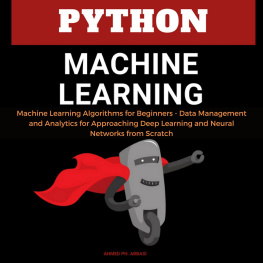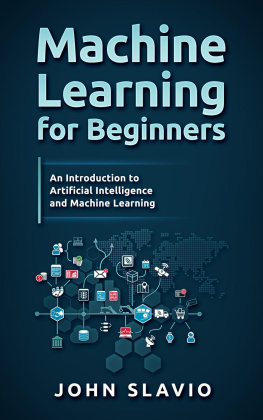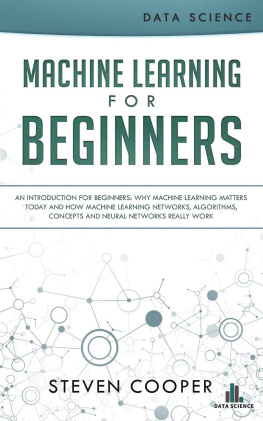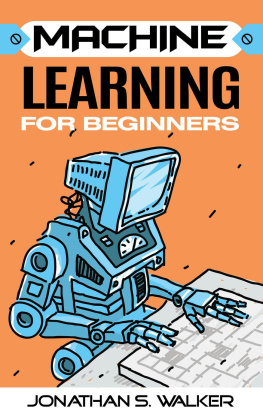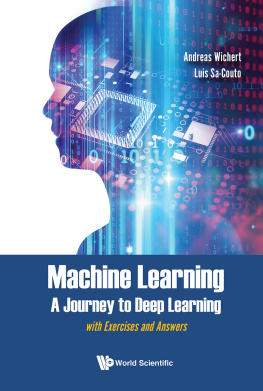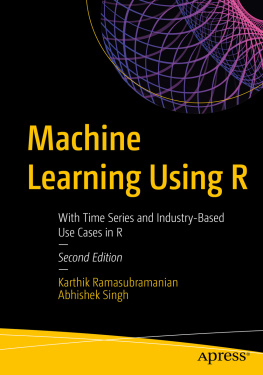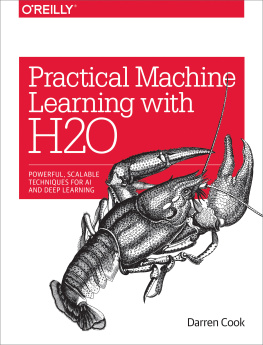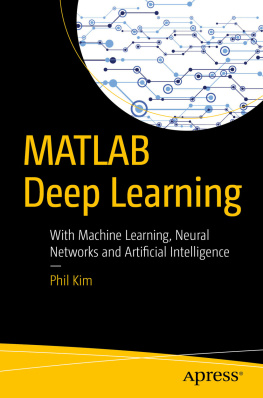MACHINE LEARNING GLOSSARY
THE BEGINNERS GUIDE TO MACHINE LEARNING
HIROTO UTAGAWA
Copyright 2020 by HIROTO UTAGAWA
MACHINE LEARNING GLOSSARY
2-1.
2-2.
2-3.
2-4.
2-4-1.
2-4-2.
2-4-3.
2-4-4.
2-4-5.
2-4-6.
2-5.
2-6.
2-7.
2-7-1.
2-8.
2-9.
2-10.
2-11.
2-12.
2-13.
2-14.
2-15.
2-16.
2-17.
3-1.
3-2.
3-2-1.
3-2-2.
3-2-3.
3-2-4.
3-2-5.
3-3.
3-4.
3-5.
3-6.
3-7.
3-8.
3-9.
3-10.
3-11.
3-12.
3-13.
3-14.
3-15.
3-16.
3-17.
4-1.
4-2.
4-3.
4-4.
4-5.
4-6.
4-7.
4-8.
4-9.
4-10.
4-11.
4-12.
4-13.
4-14.
4-15.
4-16.
4-17.
4-18.
4-19.
4-20.
4-21.
4-22.
4-23.
4-24.
4-25.
4-26.
6-1.
6-2.
6-3.
6-4.
6-5.
6-6.
6-7.
6-8.
6-9.
6-10.
6-11.
6-12.
6-13.
6-14.
6-15.
7-1.
7-2.
7-3.
7-4.
7-5.
7-6.
7-7.
7-8.
7-9.
7-10.
7-11.
7-12.
7-13.
7-14.
7-15.
7-16.
7-17.
7-18.
7-19.
7-20.
7-21.
7-22.
7-23.
8-1.
8-2.
8-3.
8-4.
8-5.
8-6.
8-6-1.
8-7.
8-8.
8-9.
8-10.
8-11.
8-12.
8-13.
8-14.
8-15.
8-16.
1. Introduction
1-1. About this book
This book is a glossary of terms related to machine learning, aimed at machine learning beginners.
It is a glossary of terms, so please consider using it in conjunction with other books for the systematic learning and a detailed understanding of each term.
1-2. Disclaimer
I am not responsible for any damage caused by the contents of this book. Please note in advance that I am not responsible for any damage or loss caused by the contents of this manual.
Please take advantage of the glossary of terms that begins in the next chapter.
2. History of Artificial Intelligence And Trends in Artificial Intelligence
2-1. Definition of Artificial Intelligence.
- Arthur Samuel, "A field of research that gives computers the ability to learn without having to be explicitly programmed.
2-2. Artificial Intelligence Level
Artificial intelligence is classified into four levels based on its functions.
Level | Functions |
Level 1 | Simple Control. The level of simple control according to predetermined rules. |
Level 2 | Rule-based. A level that uses registered patterns and chooses the best behavior by observing the outside world. |
Level 3 | Machine Learning. The level at which a human teaches the learning focus, but automatically learns the corresponding pattern. |
Level 4 | Deep Learning. This is the level at which the system automatically learns the corresponding patterns without a human being telling it what to look for. |
2-3. The First AI Boom
The late 1950s - the 1960s. The focus is on reasoning and exploration. Only toy-problems such as mazes and puzzles can be solved, and the problem of limited applicability became apparent and came to an end.
2-3-1. Search Tree
By distinguishing all patterns, we obtain the desired conditions. There are two types of search: depth-first search, in which we drill down as far as we can before moving on to another branch, and breadth-first search, in which we comb through the same hierarchy before moving on to the next lower level.
2-3-2. Monte Carlo method
A method based on the principle of search, which was also used during the first AI boom. The game is repeated from one phase of the game to the end of the game and then evaluated to see which method gives the best chance of winning.
2-4. The Second AI Boom
The 1980s. Expert systems are at the heart of the boom.
2-4-1. Expert Systems
A program that takes a field of expertise and acts as an expert in that field by taking in and reasoning with it.
2-4-2. ELIZA
A dialogue system developed by Joseph Weigenbaum in 1966. It operates on a rule-based system that receives human words and responds when the words match a pattern. It is considered the originator of "artificial incompetence.
2-4-3. The ELIZA Effect
The illusion of feeling as if you are unconsciously interacting with a human being, even though you consciously know you are relative to the computer.
2-4-4. The Cyc Project
A project started by Douglas Lennert of MCC in 1984 to create a database of common sense and to build a human-equivalent reasoning system. There is also OpenCyc, which has been partially open to the public since 2001.
2-4-5. The Frame Problems
The inability of robots with only finite processing power to deal with all of the real-world problems that could arise because of the huge amount of time it takes to determine what should be considered and what shouldnt be considered. It led to the demise of the second AI boom.
2-4-6. Symbol Grounding Issues
It asks if you can connect a symbol(a string of letters or words) to what it means.
2-5. The Third AI Boom
2000s-. Machine learning developed due to the increase in data. The deep learning craze.
2-6. Dartmouth Conference
1956 in the United States. John McCarthy was the first to use the term artificial intelligence(AI). The Logic Theorist, the worlds first artificial intelligence program, was demonstrated.
2-7. Kunihiko Fukushima
In the 1980s, he proposed the neocognitron, a hierarchical, multilayered artificial neural network.
2-7-1. neocognitron
A multi-layered artificial neural network proposed by Kunihiko Fukushima. It was used for handwriting recognition and other pattern recognition tasks and was the source of the idea of convolutional neural networks. It had the capability of error back-propagation to evaluate the errors in the output.
2-8. XAI(Explainable Artificial Intelligence)
A machine learning model in which the processes leading to the predicted or estimated results are explicable by humans, or a technology or field of research related to it.
Machine learning models tend to be black boxes, but they cannot be used with confidence unless they can be explained, so there is a growing need for model transparency.


